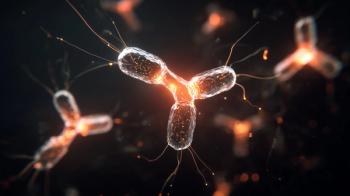
Novel Artificial Intelligence Tool Predicts Outcomes in Invasive Breast Cancer
In addition to predicting breast cancer outcomes, the AI tool can help determine effective treatment options in patients, sparing them from unnecessary treatments.
Recent study results indicate that a new
The findings demonstrate that the AI tool was able to identify patients with breast cancer who were considered high or intermediate risk, and whether they would become long-term survivors of the disease. With this information, the duration and intensity of patients’ cancer treatment can be reduced. Chemotherapy is often associated with manageable adverse effects (AEs) such as nausea, but major AEs such as damage to the heart are also a possibility.
Current methods of determining treatment involve a pathologists’ evaluation of cancerous cells in a patient’s tissue; however, the study demonstrated that patterns of non-cancerous cells are also important in predicting outcomes and finding effective treatment options. According to the authors, this is the first study to utilize AI for evaluations of both cancerous and non-cancerous cells of invasive breast cancer.
“Our study demonstrates the importance of non-cancer components in determining a patient’s outcome,” corresponding study author Lee Cooper, PhD, associate professor of pathology at Northwestern University Feinberg School of Medicine and member of the Robert H. Lurie Comprehensive Cancer Center of Northwestern University, said in a press release. “The importance of these elements was known from biological studies, but this knowledge has not been effectively translated to clinical use.”
During breast cancer diagnosis, a pathologist reviews the cancerous tissue to determine how abnormal the tissue appears. This process of grading focuses on the appearance of cancer cells, and the grade is then examined by the pathologist which helps them determine what treatment a patient will receive.
Prior research has indicated that the non-cancerous cells—including those from the immune system and those that help provide form and structure for the tissue—can be significant in sustaining or inhibiting the growth of cancer. The AI model used in the current study evaluated breast cancer tissue from digital images that measured the appearance of both cancerous and non-cancerous cells as well as the interactions between them.
The AI system analyzes 26 different properties of breast tissue in patients to generate an overall prognostic score, in addition to individual scores for the cancer, immune, and stromal cells to supplement the overall score. Favorable prognosis score may vary across patients depending on how they score. This method can be used by a patient’s care team to help create an effective, individualized treatment plan.
“These patterns are challenging for a pathologist to evaluate as they can be difficult for the human eye to categorize reliably,” said Cooper in the press release. “The AI model measures these patterns and presents information to the pathologist in a way that makes the AI decision-making process clear to the pathologist.”
Further, the model may help in assessing therapeutic response and allow treatment to be either escalated or de-escalated depending on the microscopic appearance of the tissue changes over time. The AI model was trained with hundreds of thousands human-generated annotations of cells and tissue structures within digital images of patient tissues. For several years, volunteers provided data online allowing the AI model to interpret the images of breast cancer tissue.
“We also hope that this model could reduce disparities for patients who are diagnosed in community settings,” said Cooper in the press release. “These patients may not have access to a pathologist who specializes in breast cancer, and our AI model could help a generalist pathologist when evaluating breast cancers.”
The researchers are working on further developing models for more specific types of breast cancers (eg, triple-negative and HER2-positive breast cancers) because the tissue patterns vary depending on the type of cancer. In addition, the model will be evaluated further to confirm its use in clinical settings.
“This will improve our ability to predict outcomes and will provide further insights into the biology of breast cancers,” said Cooper in the press release.
Reference
Northwestern University. AI may spare breast cancer patients unnecessary treatments. News release. November 27, 2023. Accessed November 27, 2023.
Newsletter
Stay informed on drug updates, treatment guidelines, and pharmacy practice trends—subscribe to Pharmacy Times for weekly clinical insights.




















































































































































































































